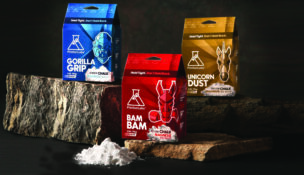Pueblo Green Chiles Taking Root as a Brand
Whole Foods has dropped Hatch chiles from New Mexico in favor of Pueblo chiles
Allen Best //October 1, 2017//


Pueblo Green Chiles Taking Root as a Brand
Whole Foods has dropped Hatch chiles from New Mexico in favor of Pueblo chiles
Allen Best //October 1, 2017//

Carl Musso was standing in an eight-acre field of chiles east of Pueblo one morning in July, the temperature hurrying toward 100.
"The better chiles, they don't need 100 degree days," says Musso, a fourth-generation chile farmer. "They need 85 to 90 days and 50 to 55 degree nights." That daily temperature swing, he says, produces the best flavors and makes Pueblo chiles thicker and meatier.
That daily temperature swing has allowed farmers along the Arkansas River to grow green chiles for more than a century. Now, in a concerted effort of growers and economic development agencies, the peppers are becoming a recognizable brand. Whole Foods has dropped Hatch chiles from New Mexico in favor of Pueblo chiles. A festival that in the early 1990s drew just a few hundred curious customers now attracts 140,000 people. This year, the Pueblo Chile and Frijole Festival was held Sept. 22-24. By next year, says Doniella Gonazales, executive director of the Pueblo Chile Association, license plates with Pueblo chiles will be available in Colorado.
Entrepreneur Jolene Collins has built a niche artisanal product, Jojo's Sriracha, around the Pueblo chile. This year, she plans to produce 15,000 jars for sale at artisan flea markets, festivals and in some stores.
Collins created her recipe at home: a paste of chile peppers, vinegar and sea salt, along with coconut, then fermented with vinegar. She began her business in North Denver in 2014. This year, she is setting up shop at a new incubator kitchen located in a former school building on St. Charles Mesa, east of Pueblo, where most of the peppers are grown.
"For us, it's all about local," she says.
Pueblo County wants to promote specialty agriculture products. "It's very difficult for farmers to make a profit when they are growing a commodity-type product, whether corn (for livestock) or hay," says Christopher Markuson, director of the county's Department of Economic Development. A higher value crop helps Arkansas Valley towns retain their economic vigor even as water increasingly gets shipped to support expanding neighborhoods in metropolitan Denver.
Trademarking is part of the strategy. The Colorado Department of Agriculture awarded a $143,000 grant to aid the Pueblo Chile Growers Association. If approved by the U.S. Patent and Trademark Office, the trademark will require certification of all chiles sold under the Pueblo name and will require certification of all chiles sold under the Pueblo name and will be limited to growers in Pueblo County who adhere to standards specified by the growers association. Rocky Ford cantaloupes are one local example of a trademarked agriculture product. Another is Vidalia (Georgia) onions.
Chile growers in Pueblo County want consumers to think of their product as being meatier and thicker and altogether better for slathering onto a pizza, sausage or hamburger. Hatch chiles from New Mexico? Great for grinding into powder, they say.
Land devoted to Pueblo chiles has expanded as their population has grown, says Mike Bartolo, a Colorado State University extension agent in Rocky Ford. His late uncle, Harry Mosco, is credited with genetically engineering the micrasol variety of chile to create what he called a Pueblo chile. Bartolo reports 300 varieties, some with characteristics of jalapenos, have been created in the last quarter century. Spicy heat varies, but the average runs 5,000 to 6,000 Scolvilles. That will grab the attention of your tongue but not scald it.
On St. Charles Mesa, several dozen stands offering chiles along with fruit and vegetables can be found. Among the largest is that of Musso Farms, which is open daily from June until November.
Next door is an art gallery, and along the driveway are several dozen varieties from around the world with names like Wrecking Ball and Trinidad Scorpion, whose heat is measured not by the thousands of Scolvilles, but by the millions. Carl Musso siad he won't touch them. But he does advise that if you want the best, most flavorful chiles, visit in September.
























